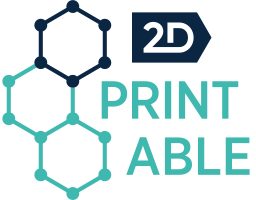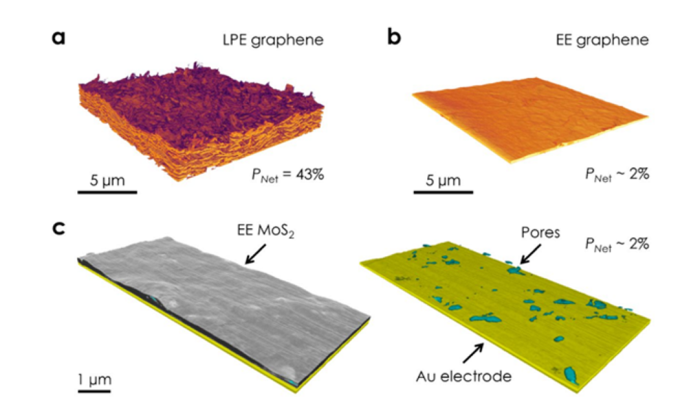Our 2D-PRINTABLE partners from UKa and TCD have made a remarkable progress in characterizing available 2D materials and their printed networks and heterostacks.
The study focused on characterizing nanosheets produced through liquid phase exfoliation (LPE) and electrochemical exfoliation (EE), including materials such as MoS2, AsSbS3, As2S3, SnGe, InSe, Mo0.5W0.5Se2, and HfSe3. Atomic force microscopy (AFM) revealed that the aspect ratio of EE nanosheets can reach > 103, which is 30 times larger than those obtained by the LPE method. Further characterization by UV-Vis and Raman spectroscopy was used to investigate the intrinsic properties of the produced nanosheets. Quantitative analysis of nanosheet network morphology, which is typically difficult due to the involved length scales, was carried out using AFM. A precise layer-by-layer fabrication protocol was developed, enabling meticulous control over layer thickness. Additionally, spatial variations in the network morphology were assessed using optical transmission scanning measurements.
Moreover, the application of FIB-SEM nanotomography (FIB-SEM-NT) enabled the 3D reconstruction of both 2D networks and heterostacks with unprecedented resolution. This cutting-edge technique facilitated detailed examination of the internal structures of nanosheet films, providing insights into their assembly under different deposition conditions and across various nanosheet types. All these findings represent a substantial leap forward in the field of 2D materials research.
For more information, read the full report on our website.


